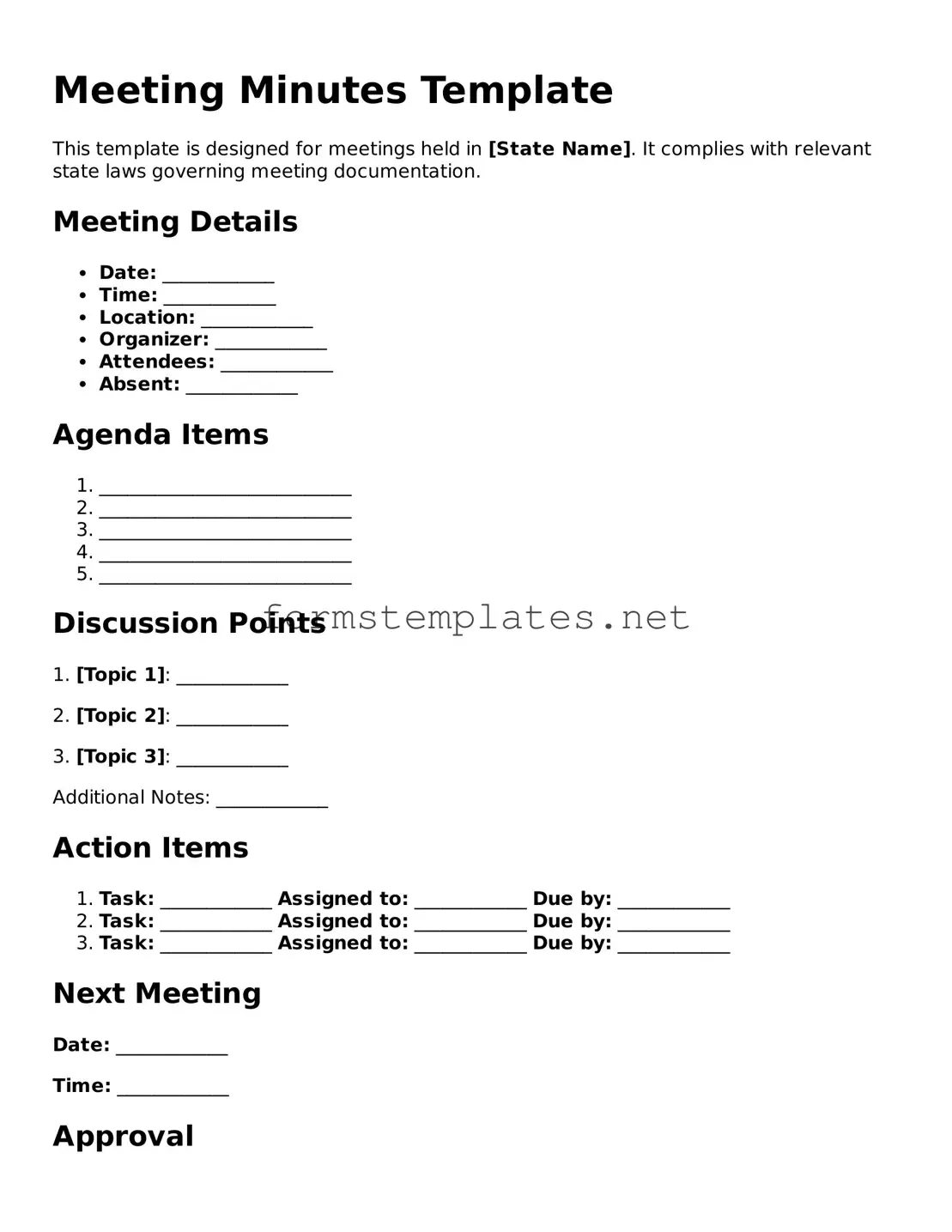Meeting Minutes Template
This template is designed for meetings held in [State Name]. It complies with relevant state laws governing meeting documentation.
Meeting Details
- Date: ____________
- Time: ____________
- Location: ____________
- Organizer: ____________
- Attendees: ____________
- Absent: ____________
Agenda Items
- ___________________________
- ___________________________
- ___________________________
- ___________________________
- ___________________________
Discussion Points
1. [Topic 1]: ____________
2. [Topic 2]: ____________
3. [Topic 3]: ____________
Additional Notes: ____________
Action Items
- Task: ____________ Assigned to: ____________ Due by: ____________
- Task: ____________ Assigned to: ____________ Due by: ____________
- Task: ____________ Assigned to: ____________ Due by: ____________
Next Meeting
Date: ____________
Time: ____________
Approval
These minutes will be reviewed and approved at the next meeting.
_____ Signature of the Organizer ____________
